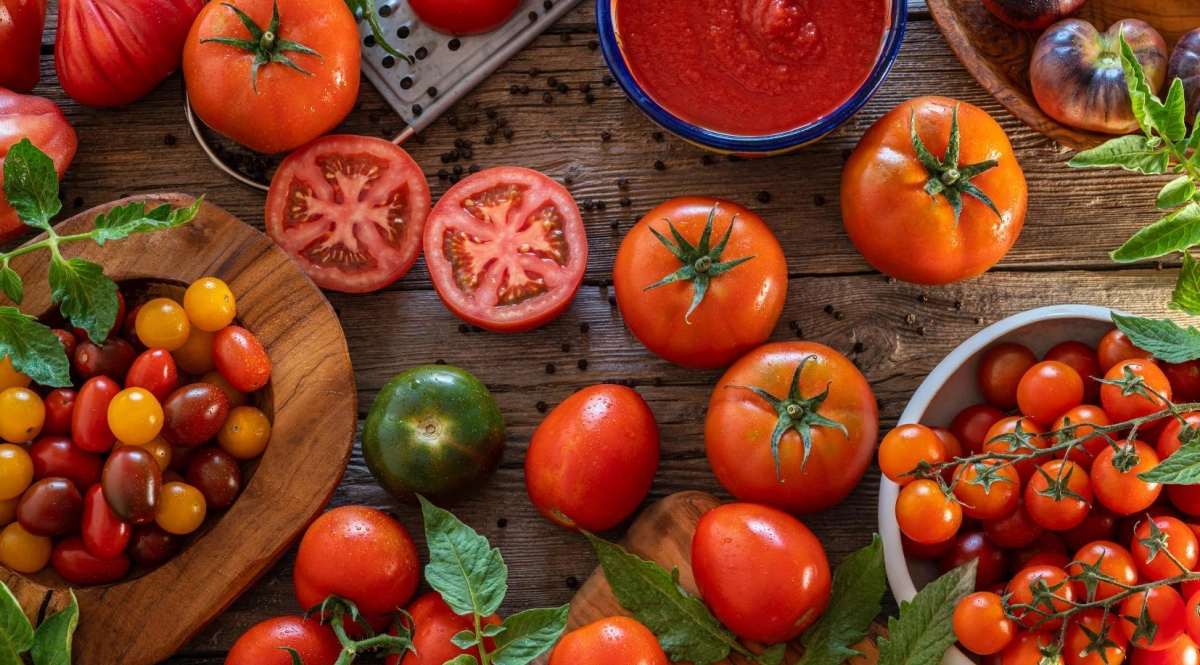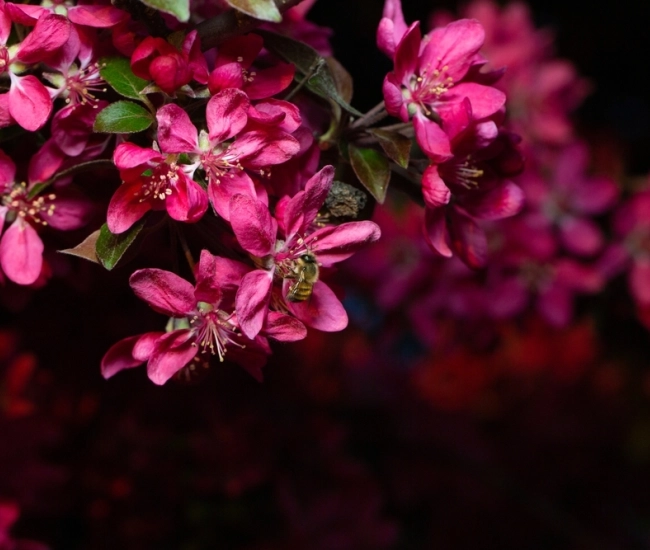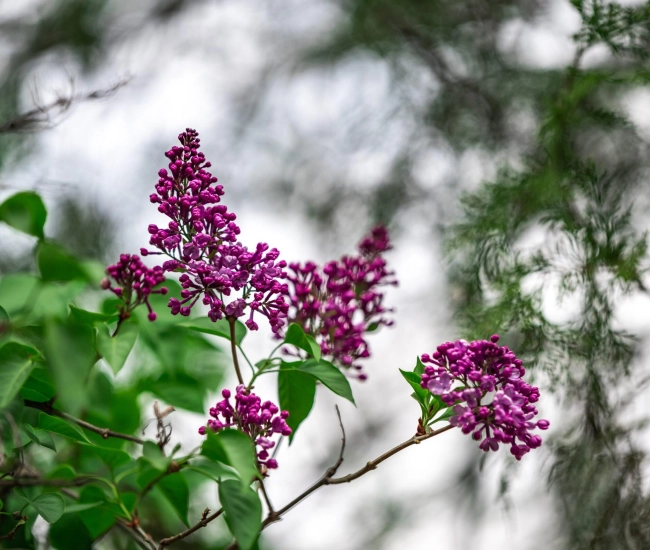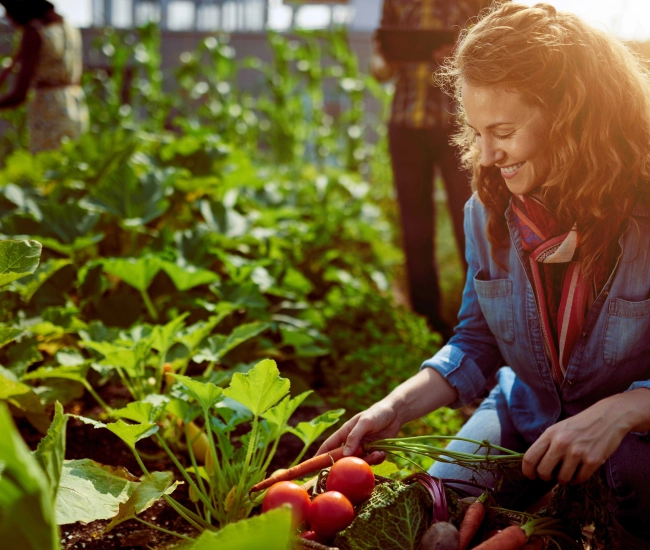
Anyone who starts a vegetable garden will surely plant some tomatoes. Whether they are started indoors in the spring or directly planted in the ground from young plants found at the nearest Passion Jardins store, tomatoes are the queens of the vegetable garden. Queens or divas? That's the question. Tomatoes can be a bit capricious, and above all, they come in so many varieties that it's easy to get lost. Passion Jardins met with real tomato specialists at our friends from the Ferme coopérative Tourne-Sol to uncover the mystery of the tomato.
Choosing the Right Tomato for Your Needs
Among the hundreds of tomato varieties available on the market, no two are alike. By conducting a few taste tests, you'll be able to see the full range of colors, flavors, and textures that tomatoes offer you. As Sophie Descôteaux aptly says: "Tomato" is like their last name; the variety is their first name: each has its own personality!
We can separate tomatoes into four main families:
- The snack tomato
Cherry tomato, grape tomato, or cocktail tomato. A small tomato that rarely makes it to the plate because it's eaten well before!💗Tourne-Sol's favorite is the Peacevine Cherry Tomato, a small red cherry tomato. A classic that children love!💗 - The salad tomato
Cocktail or standard. A medium-sized, juicy, and tasty tomato available in various colors to enhance dishes.💗Tourne-Sol's favorite is the Jaune Flammé Tomato, a farm favorite. Small to medium-sized, orange-colored, very sweet and tasty.💗 - The sandwich tomato
A large tomato where practically a single slice is enough to fill a sandwich. Juicy and tasty.💗Tourne-Sol's favorite is the Striped German Tomato which won the taste test. A very large yellow-orange tomato marbled with red. Very sweet, juicy, and flavorful.💗 - The sauce tomato
A variable-sized tomato that contains fewer seeds, less juice, and more flesh. Perfect for canning and making tomato sauce.💗Tourne-Sol's favorite is the San Marzano Tomato, an Italian classic. A small red Italian tomato with very little juice and seeds, ideal for canning, tomato sauce, tomato paste, etc.💗

To Avoid Failing with Your Tomatoes
Successfully Starting Your Seeds
Starting vegetable seeds at home is a fun and very economical activity, which should not be overlooked in the current context. It also allows you to try different varieties that are more rarely found in garden centers as young plants. However, successful seed starting is an art in itself, and a few basic rules must be followed for success. Sophie shares her pro tips for growing strong and vigorous tomato plants from seeds.
- Sow indoors 6 to 8 weeks before transplanting (we're talking about the end of March in zone 5), with 2-3 seeds per cell or pot. Avoid starting seeds too early as they will become weak and leggy.
- Cover the seeds with potting soil. Keep the soil moist until the seeds have germinated. A seed tray with a plastic dome works very well to retain moisture. Tomato seeds need light and warmth, so a sunny windowsill is ideal. If in doubt, hang a grow light above the seedlings.
- Once the seeds have germinated, remove the dome and let the soil surface dry between waterings.
- If you first sow in a large container, do not move the plants until they have their first true leaves. The first two to develop are not the first true leaves but rather the cotyledons. So, wait for the next ones. Once the first true leaves have developed, transplant the seedlings into individual pots to allow the roots to develop further. Bury them up to the cotyledons.
- When the risk of frost has passed, it's time to transplant them outdoors. The golden rule to avoid ruining everything: acclimate the plants. Take them outside, gradually exposing them to outdoor conditions: a bit of direct sunlight, a bit of wind each day for a few days. This will prevent transplant shock.
- Once the plants are acclimated, plant them in a container or directly in the ground, ensuring the soil reaches the first leaves. This way, roots will develop on the section of the stem that is in the soil, and the plant will be stronger.

Determinate or Indeterminate Plant?
On the seed packet or the plant's label, you may notice the mention "determinate" or "indeterminate." What does that mean? Sophie informs us:
The determinate tomato will have more controlled growth and will be smaller in size. The plant will produce fruits that will mature within a determined period. For small spaces, determinate plants are often more suitable.
The indeterminate tomato will continue to grow and will require continuous staking throughout the season. It will produce fruits over a longer period. Ideal for large gardens and for having fruits longer.
The best way to know which tomato you like the most is, of course, to try several and feature those that win the honors during your taste test. Have fun and, above all, be open to discoveries!

Thanks to Sophie Descôteaux from the Ferme Coopérative Tourne-Sol for her generosity!
Tips and advice



